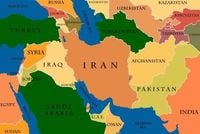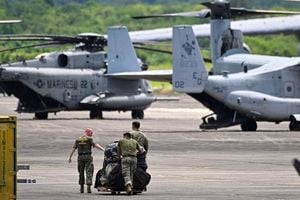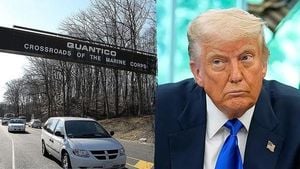On September 20, 2025, Pakistan and Saudi Arabia inked the Strategic Mutual Defense Agreement (SMDA), a pact that has sent ripples through South Asia and the Gulf. Islamabad later commemorated it as a historic act of fraternal unity, echoing the language of alliances like NATO: an attack on one will be considered an attack on the other. While the move was celebrated in both capitals, the reality behind the headlines is far more complex, shaped by decades of military cooperation, economic ties, and a shifting geopolitical landscape.
The relationship between Pakistan and Saudi Arabia is hardly new. Since 1962, Pakistan has trained more than 8,200 Saudi armed forces personnel, and during the first Gulf War, Islamabad stationed up to 20,000 soldiers in the kingdom’s eastern provinces. In 1982, the two countries formalized their military cooperation, a move catalyzed by the 1979 Siege of the Holy Mosque in Mecca and subsequent regional upheavals like the Iran-Iraq war and the Soviet invasion of Afghanistan. Over time, Saudi Arabia became a crucial supplier of oil and remittances for Pakistan’s often-precarious economy, while Pakistan’s military prowess and nuclear status offered Riyadh a sense of strategic security.
Yet, as Minute Mirror and The Diplomat both point out, the relationship has always been transactional. When Riyadh asked Islamabad to send troops to Yemen in 2015, Pakistan’s parliament declined, wary of being drawn into a sectarian quagmire. In turn, Saudi Arabia has shown little inclination to risk its own interests for Pakistan—especially in confrontations with India. In fact, Saudi-India trade now exceeds $50 billion annually, making New Delhi Riyadh’s second-largest trading partner. As a result, despite the rhetoric of the new pact, few expect Saudi Arabia to jeopardize its economic ties with India by intervening on Pakistan’s behalf in a crisis over Kashmir.
Recent events have only heightened the stakes. The SMDA was signed against a backdrop of escalating tensions in the Gulf, following Israeli military strikes on Hamas leadership in Doha and a contentious summit of the Arab League and Organization of Islamic Cooperation in Qatar. For Pakistan, the timing was especially significant: the country had just emerged from an 87-hour war with India in May 2025 and continues to face economic instability, terrorism, and diplomatic isolation. The deal with Riyadh promises not only a steady oil supply but also timely financial assistance—lifelines that Islamabad can ill afford to lose.
But what does the agreement actually mean in practice? According to The Diplomat, the SMDA will see both countries reinforce their military cooperation through increased joint exercises, expanded intelligence sharing, training of Saudi personnel, and deeper integration of Saudi Arabia’s command and control systems. More Pakistani defense personnel are expected to be deployed in the kingdom, and Riyadh hopes the pact will help create the security environment needed to diversify its oil-dependent economy under Vision 2030.
Still, the most contentious aspect of the pact is its ambiguity regarding nuclear guarantees. For decades, rumors have swirled about a possible Pakistani “nuclear umbrella” for Saudi Arabia. These suspicions were fueled in the 1970s by then-Prime Minister Zulfikar Ali Bhutto’s talk of an “Islamic Bomb” and resurfaced after Riyadh’s financial bailout of Islamabad following Pakistan’s 1998 nuclear tests. The new agreement, with its vague language and provocative statements from officials on both sides, has reignited these fears.
Ali Shihabi, a Saudi analyst close to the royal court, described nuclear power as an integral part of the deal, while an anonymous Saudi official suggested the agreement “covers all military means.” Even more startling, Pakistan’s Defense Minister Khawaja Asif initially declared, “under this comprehensive agreement, whatever capability we have will be made available to Saudi Arabia.” He later walked back his comments, stating that nuclear weapons “are not on the radar,” but the damage was done. As The Diplomat notes, “inconsistent rhetoric risks undermining Pakistan’s carefully crafted nuclear posture.”
This ambiguity has serious consequences. Pakistan has always maintained that its nuclear arsenal is solely intended to deter Indian aggression. Any suggestion that these weapons might be available to Saudi Arabia not only undermines this narrative but also risks provoking international backlash. Former U.S. ambassador Zalmay Khalilzad has warned that such a move could trigger sanctions or even preemptive action by Israel, which views any Islamic nuclear arrangement as an existential threat. Israel has repeatedly cautioned against the spread of nuclear weapons in the Muslim world, and any hint that Riyadh is acquiring nuclear guarantees could incite direct hostility toward Islamabad.
Iran, too, is watching closely. The rivalry between Riyadh and Tehran is a defining feature of Middle Eastern geopolitics, and any Saudi military buildup—especially one with nuclear overtones—raises alarm in Tehran. Pakistan, for its part, is keen to avoid being drawn into a Saudi-Iran proxy conflict, especially given the delicate Beijing-mediated thaw between the two Gulf powers and the importance of Tehran’s cooperation in quelling militancy in Pakistan’s Balochistan province.
Domestically, the pact could also stoke sectarian tensions within Pakistan, particularly if it is perceived as part of a broader Sunni coalition. The country’s history shows how quickly external alignments can inflame internal divisions, leading to violence and instability. As Minute Mirror observes, “there is a chance that the agreement may exacerbate sectarian tensions within Pakistan if it is presented as a component of a Sunni coalition.”
In many ways, the SMDA reflects the inherent imbalance in the Saudi-Pakistani relationship. While Saudi Arabia wields immense financial power, its military is heavily reliant on U.S. equipment and support. Riyadh cannot act autonomously in a major confrontation without Washington’s blessing. Pakistan, meanwhile, brings nuclear deterrence and manpower to the table, but its economic vulnerability makes it increasingly dependent on Saudi largesse. Critics argue that Islamabad is being used more as a shield than as an equal partner, expected to take on risks that Riyadh itself would rather avoid.
Ultimately, the true test of the agreement will be how both countries navigate the competing demands of regional alliances, economic interests, and domestic stability. Will the pact serve as a genuine security shield, or will it become a shackle of reliance, entangling Pakistan in conflicts far from home? As former Prime Minister Zulfiqar Ali Bhutto famously declared, “We will eat grass, but we will not give up on our nuclear program.” The decisions made today must be guided by that spirit of sovereignty—ensuring that the alliance serves as a safeguard for survival, not a burden of dependence.
For now, the world is left to watch and wonder whether Islamabad’s leaders have truly weighed the long-term costs and benefits, or if they have simply traded short-term gains for future entanglements. The Saudi-Pakistan defense pact stands as both a symbol of unity and a stark reminder of the perils that come with borrowed wars and ambiguous promises.




